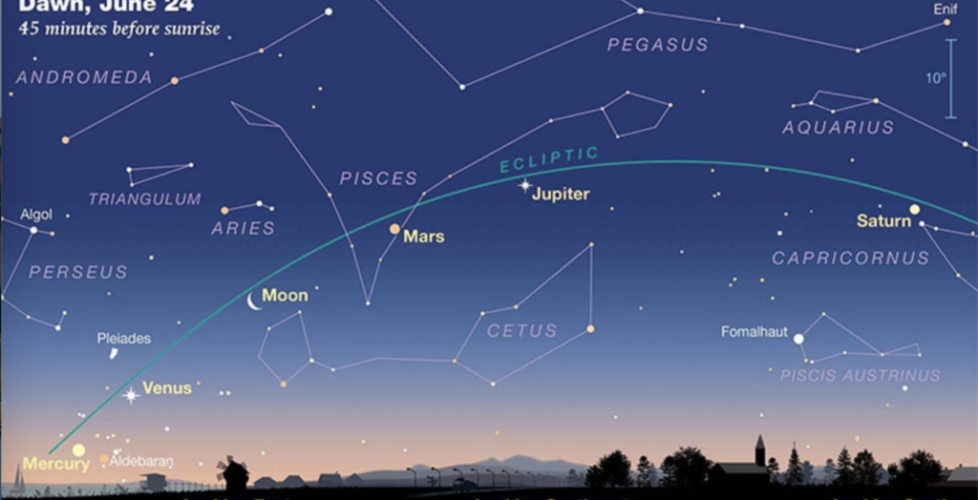Rare Planetary Alignment Visible This Week
Here is an interesting celestial sight that will be visible in the early morning this week in mid-June 2022.
Five naked-eye planets arc across the sky from east to west in the correct order of increasing distance from the Sun: Mercury (low above the eastern horizon), then very bright Venus, followed by Mars (looks reddish orange), Jupiter (bright), and Saturn. Such a “planetary parade” with all 5 planets visible *simultaneously* last occurred 18 years ago, and I think it won’t happen again until around 2100 (I might be wrong about this, but the configuration is quite rare in any case). To top it off, on the early morning of June 24, the waning crescent Moon will appear between Venus and Mars — representing Earth (since the Moon orbits us) at its proper place in the celestial lineup.
If you want to include Mercury, the best time to view this spectacle will be about 45 minutes before local sunrise: late enough in the night that Mercury will have had a chance to rise higher above the horizon, but not so late that the sky will be too bright because of the approaching sunrise. Binoculars could help you spot Mercury (or, use an App such as Sky Tonight, Star Walk 2, or SkyView). To see Mercury, you’ll need a very low, clear eastern horizon (i.e., no buildings, trees, hills, etc. in the way), but the other planets will be much easier to see in the southeast sky (and south, for Saturn).
This week, Mercury’s apparent separation from the Sun is decreasing, so the sooner you look (e.g., Sunday or Monday, June 19 or 20), the easier it will be to see Mercury — but try to also view the sky 45 minutes before sunrise on June 24, when the crescent Moon will join the arc between Venus and Mars.
I attach two diagrams: one from Sky & Telescope magazine showing the planets among the constellations, the other from timeanddate.com showing a simulated view from New York City at 4:40 am EDT on June 24.
Of course, although these planets *appear* close together in the sky, they are actually separated by up to hundreds of millions of kilometers; Jupiter and Saturn are 5 and 10 times farther from the Sun than Earth is, for example.
Wishing you clear skies,
Alex

